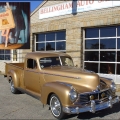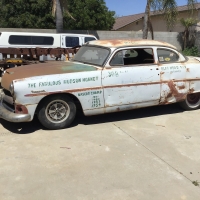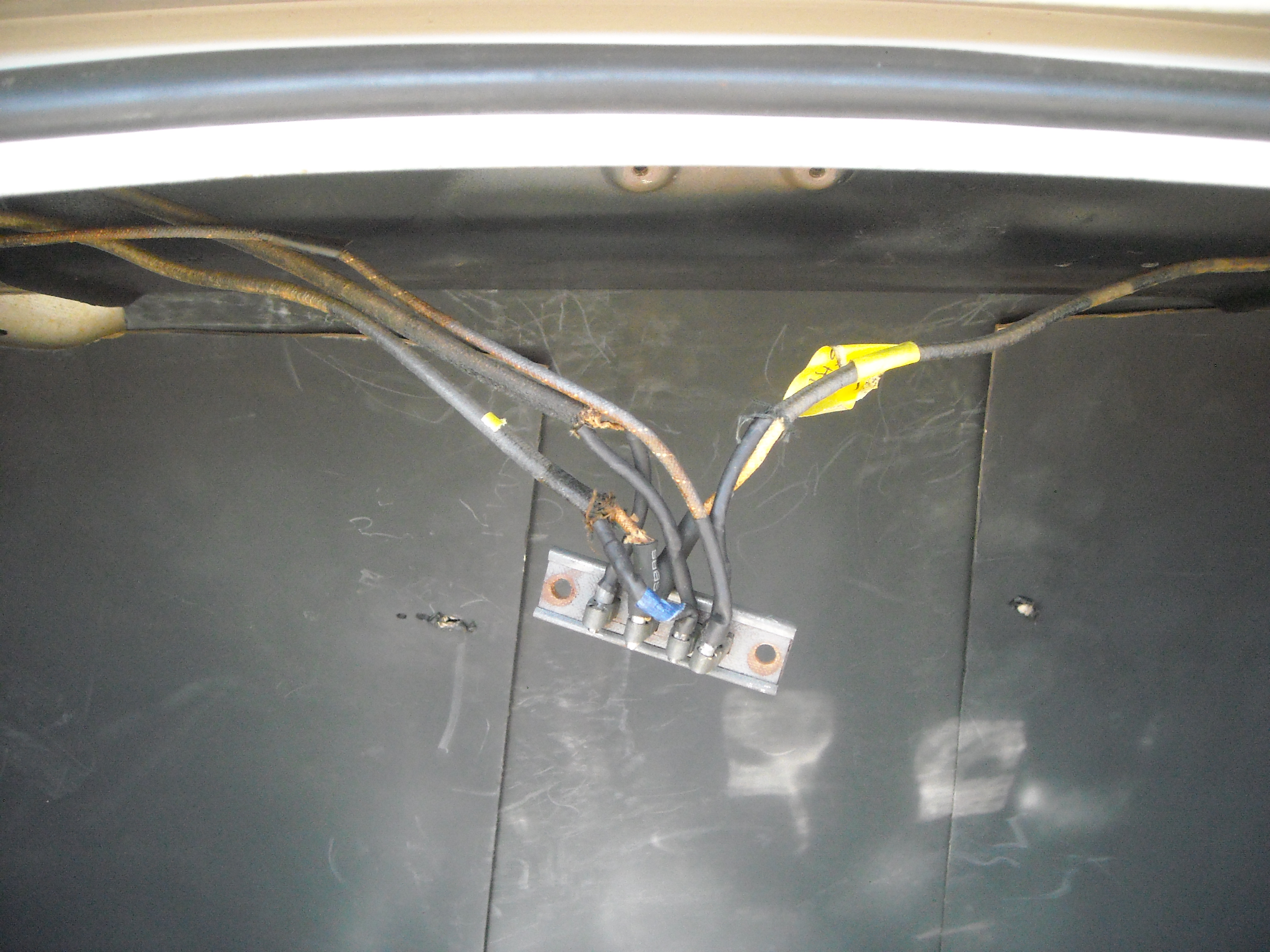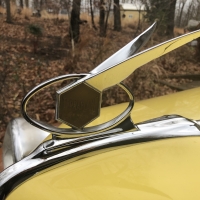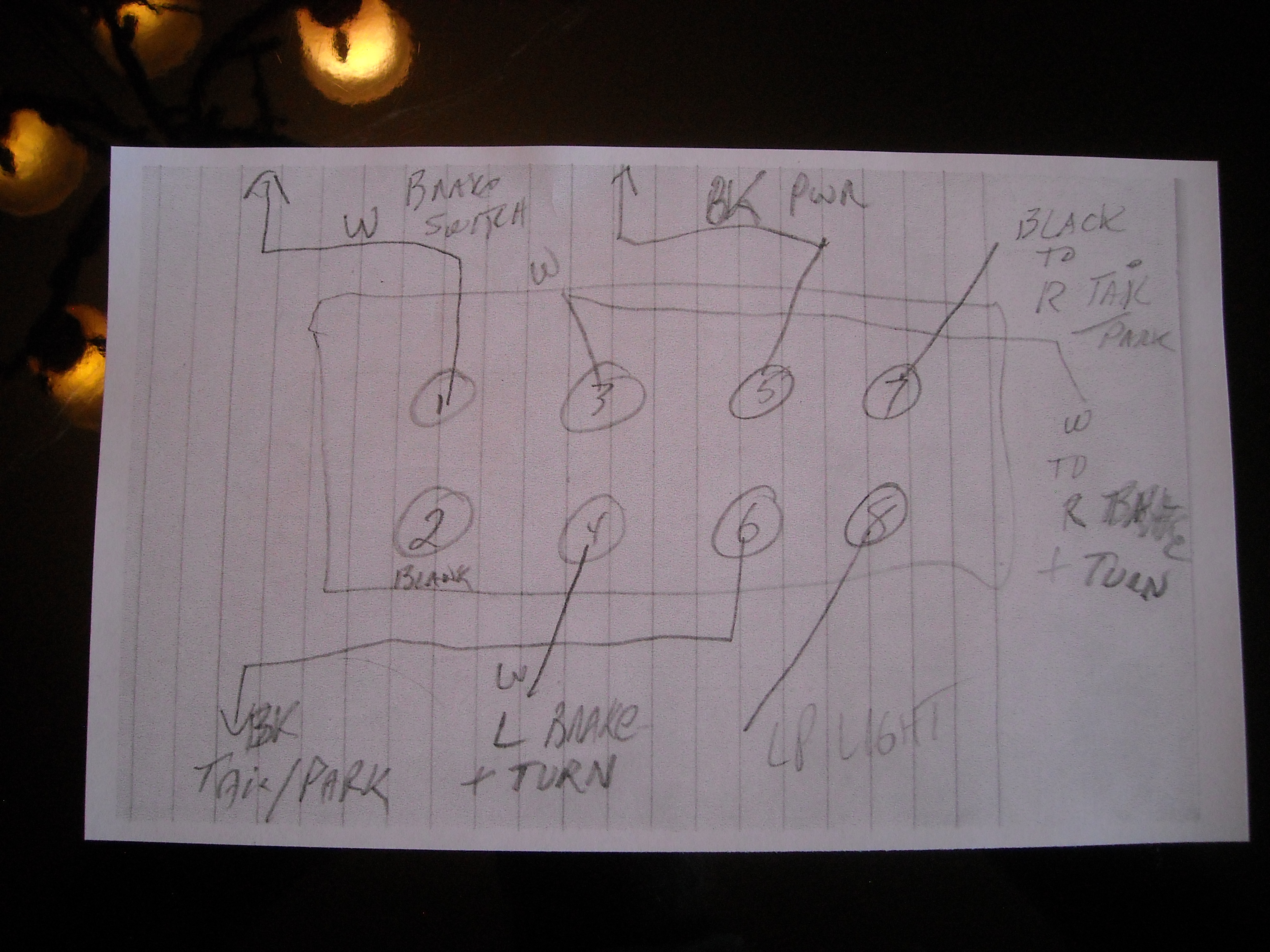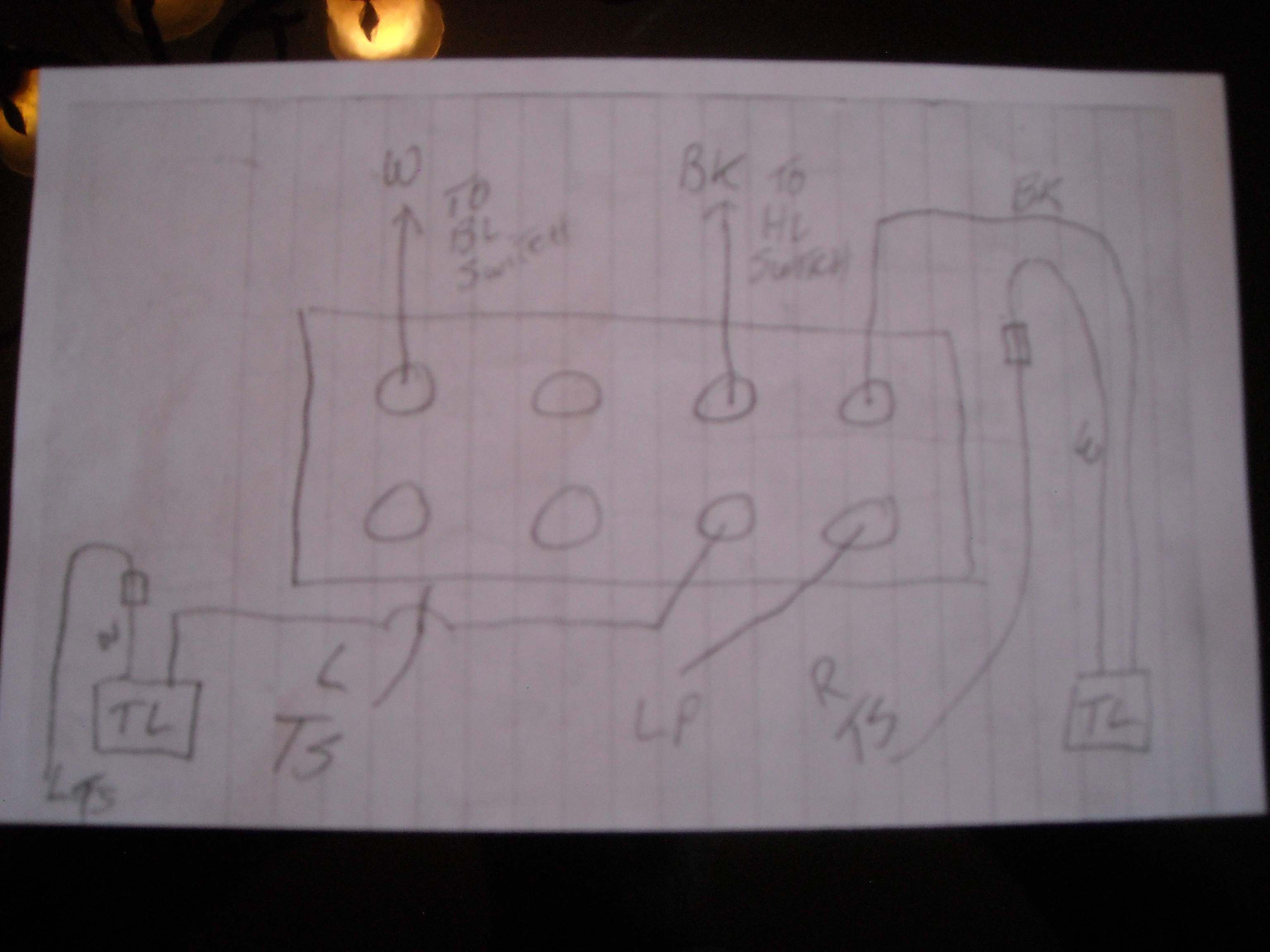Help Needed in Wiring Turn Signals 47 Super Six sedan
I have a turn signal switch column mounted with the wiring harness hanging down and no wires are attached except to the flasher.
The unit is stamped: Auto Lamp Chicago SOCO.
Since the wire colors are different from what is diagramed on page 132 of my Tech manual I could use some help in determining what goes where.
So, here's what I have:
Light Yellow, Green, Blue, Red, Brown, Orange attached to flasher P, Black attached to flasher L. So, 7 wires in total in the switch harness.
In addition, there is a dark yellow wire with a fuse attached to flasher X which I assume is the hot lead to the gas gauge or other location?
If anyone has a wiring diagram for this type of switch, please post or message it to me.
Any help or tips on how to wire this unit much appreciated.
Comments
-
Never mind all, What I thought was SOCO turned out to be 9000 after more cleaning.
I found several diagrams online. Now for the fun part.
0 -
I have a step down steering column tube with the factory directional switch and steering wheel in my 46 pickup. It fit right in over the 46 steering shaft. Just had to add a small piece of tube at the bottom to reach the steering box for the clamp. I converted it to 12 volts with a Kwik Wire street rod harness with a built in fuse block. Looks nice with the later steering wheel and horn ring and directionals all Hudson.
0 -
So now a new problem on my 47 fender lights. I am using a 7 wire system for the turn signals:
2 wires go to the flasher.
2 wires to the front fender lights R and L.
2 wires to the rear taillights R and L.
1 wire to the brake light switch.
The only wires currently hooked up are the 2 to the front fender lights.
Power is from the flasher X to the gas gauge per the Hudson manual.
I have the following:
New/good 1158 bulbs.
The fender parking lights both light as they should.
The turn signals have power to the pigtail contacts and flash with a continuity light but the bulbs do not light steady or flash.
Any Ideas?
0 -
Make sure the light housing is grounded. With the mounting pad under the housing you might be insulating it, and not getting a good ground.
0 -
54 Coupe, I ran a secondary ground wire just to be sure and same result. Parking light bulbs still light up and the turn signal lights still don't flash.
0 -
Did you convert the sockets to double contact? The fender lights are single contact unless someone already converted them to be park and directional lights.
0 -
Yes, they are double contact sockets. The turn signal light contact flashes when using a continuity light but the bulb still won't flash.
0 -
Update: I have added the 2 wires to the rear for the taillights. Those wires show "flashing" current using a continuity light. So now all four wires to the light fixtures show current.
When I insert an 1158 bulb into either of the fender lights it kills the flashing sequence, but the parking lights still work.
I have tried new pigtails and swapped out the sockets with the same result.
0 -
After changing the power source from the fuel gauge to the coil the front turn signals now flash.
Now a new problem with the rear lights.
I have run 2 temporary wires from the turn signal switch to the trunk for the R and L rear turn signals. If I connect either turn signal wire to any terminal on the wire junction mounted in the trunk as pictured, both taillights will flash. And it makes no difference if the wire junction is grounded or not.
If I run either turn signal wire directly to the taillight socket both R and L taillights will flash simultaneously.
When not using the rear turn signals the rear lights all work as they should.
Anyone have any ideas?
0 -
Did you run your existing brake light feeds correctly through the turn signal switch? On the Hudson 3-wire signals, you need a separate bulb in the rear because there’s no interrupt circuit. The 6-wire version does. If your aftermarket turn signal switch has an interrupter, you’ll feed the brake light to that circuit and you’ll need to make sure the feed to each brake light is separate from each other
0 -
Hi ToddH, my setup is a 7 wire Auto Light Chicago 9000. I listed all the wires and their destinations earlier in this thread based on a diagram online.
The brake light wire goes to the "out" side of the brake light switch which does allow the turn signals to interrupt the brake lights. One wire goes from the brake light switch to the junction (pictured) in the trunk, From the junction, one wire goes to the RH brake light and another to the LH brake light.
I now have the left rear working correctly and the right rear turn signal will flash. The final straw seems to be getting the RH brake light to function correctly and then allowing the turn signal to interrupt it without losing intensity.
I'm getting close through trial and error and may next replace the junction. I'm also looking for a good way that will last, to add a wire to a bullet connector to the brake light switch and a few other locations.
0 -
All appears to be working correctly except:
The right rear is the last problem. Either the RH brake light works or the RH rear turn signal works not both.
Attached are 2 pics of diagrams. The first is my copy of what the 47 manual shows where the wires for the rear come together.
The second is what I have changed the wiring to in order to add the rear turn signals. It depicts how the right rear turn signal works but the brake light does not. I can change the wiring and the brake light will work but then it cancels the RR turn signal. I have run a separate wire from the brake light switch to just the right rear and no change.
Any ideas?
0 -
I'm no expert but it sounds like you are getting some kind of cross-feed through the wires or the contacts in the socket(s). I had a 57 Chevy station wagon that I drove in high school in 1972, it had so many issues that cropped up with my brake lights and turn signals that I could not resolve on my own. I visited with the auto shop teacher and he took a look at my problem. After about 15 minutes of trying to diagnose the problem he took all of the bulbs out, front and rear and sprayed WD-40 in the light sockets, then blew them out with air. He then used the plastic end of a small screwdriver and pushed it into the back of the sockets to make sure that the springs behind the bakelite wafer and contacts were free and not binding. He then ran the blade of the screwdriver between the two contacts in each socket to make sure the space in between was not causing a short. He put new bulbs in each socket and low-and-behold, everything worked perfectly!
You may also have dirt between the contacts in the turn signal switch that is causing a short. The switch should come apart just be slow and careful when separating the two halves. Take photos so you can remember how it goes back together.
Hope this helps.
John Forkner
0 -
Thanks for your response one rare 39
0 -
Bitburger, is the "Auto Lamp Chicago 9000" the original turn signal switch, or is it an aftermarket? If aftermarket, does it self-cancel as the factory unit did? I was just curious.
It's not hard to find the original Hudson switch (at least for the StepDowns) and I believe it can be retro-fitted to the earlier cars without much trouble. For example, I have the switch from a 1952 Hudson (I think it's a six-wire switch) and easily fitted it to my 1937.
When you use the original switch I'd think that the color coding on the wiring diagram would match that of the switch itself, making it easier to install (perhaps) than an aftermarket unit. The Hudson switch is self-canceling (many aftermarket switches were not). Plus, the original switch (at least, for the StepDowns) has a nice metal raceway that carries the wiring from the switch box down to the dashboard.
But, then, you may already have the original Hudson switch. I was just unaware whether the "Auto Lamp Chicago 9000" is in fact the original Hudson switch.
0 -
I have always used 1154 light bulbs in my 6v Hudson tail lights (1157 for 12v). Is the pin to contact orientation the same on the 1158? I ran into that once, decades ago. When the bulb was turned into the socket, the contacts for the wiring didn't line up right.
0 -
Jon, The Auto Light Chicago 9000 is an aftermarket TS switch to the best of my knowledge.
0 -
54coupe I am using 1154's in the taillights which have offset posts. I am using 1158 bulbs in the fender mount lights which are not offset post bulbs. Both types are 6 volt and I believe to be correct.
0
Categories
- 36.9K All Categories
- 113 Hudson 1916 - 1929
- 20 Upcoming Events
- 92 Essex Super 6
- 28.6K HUDSON
- 574 "How To" - Skills, mechanical and other wise
- 995 Street Rods
- 151 American Motors
- 178 The Flathead Forum
- 49 Manuals, etc,.
- 78 Hudson 8
- 44 FORUM - Instructions and Tips on using the forum
- 2.8K CLASSIFIEDS
- 608 Vehicles
- 2.2K Parts & Pieces
- 77 Literature & Memorabilia
- Hudson 1916 - 1929 Yahoo Groups Archived Photos
